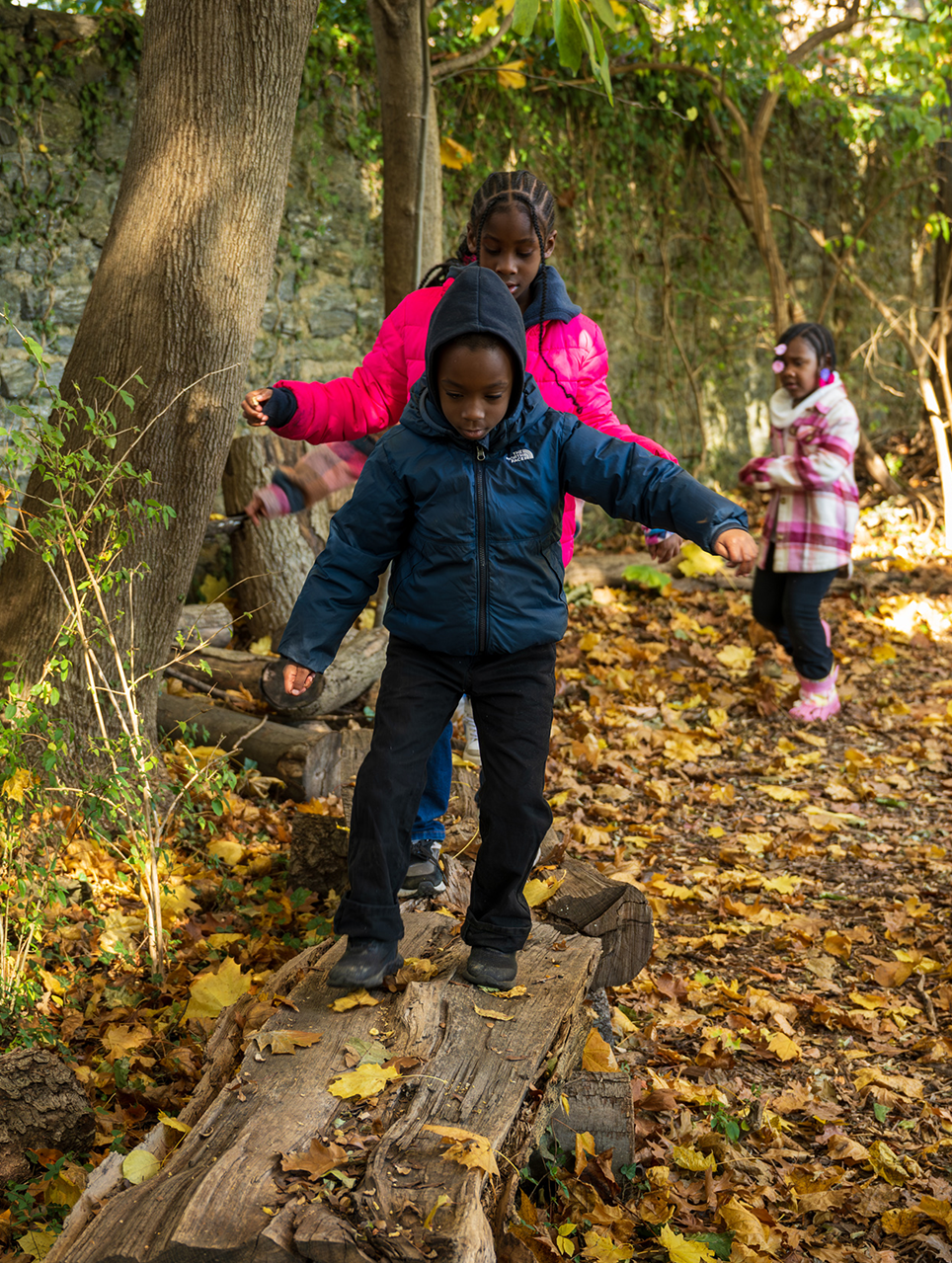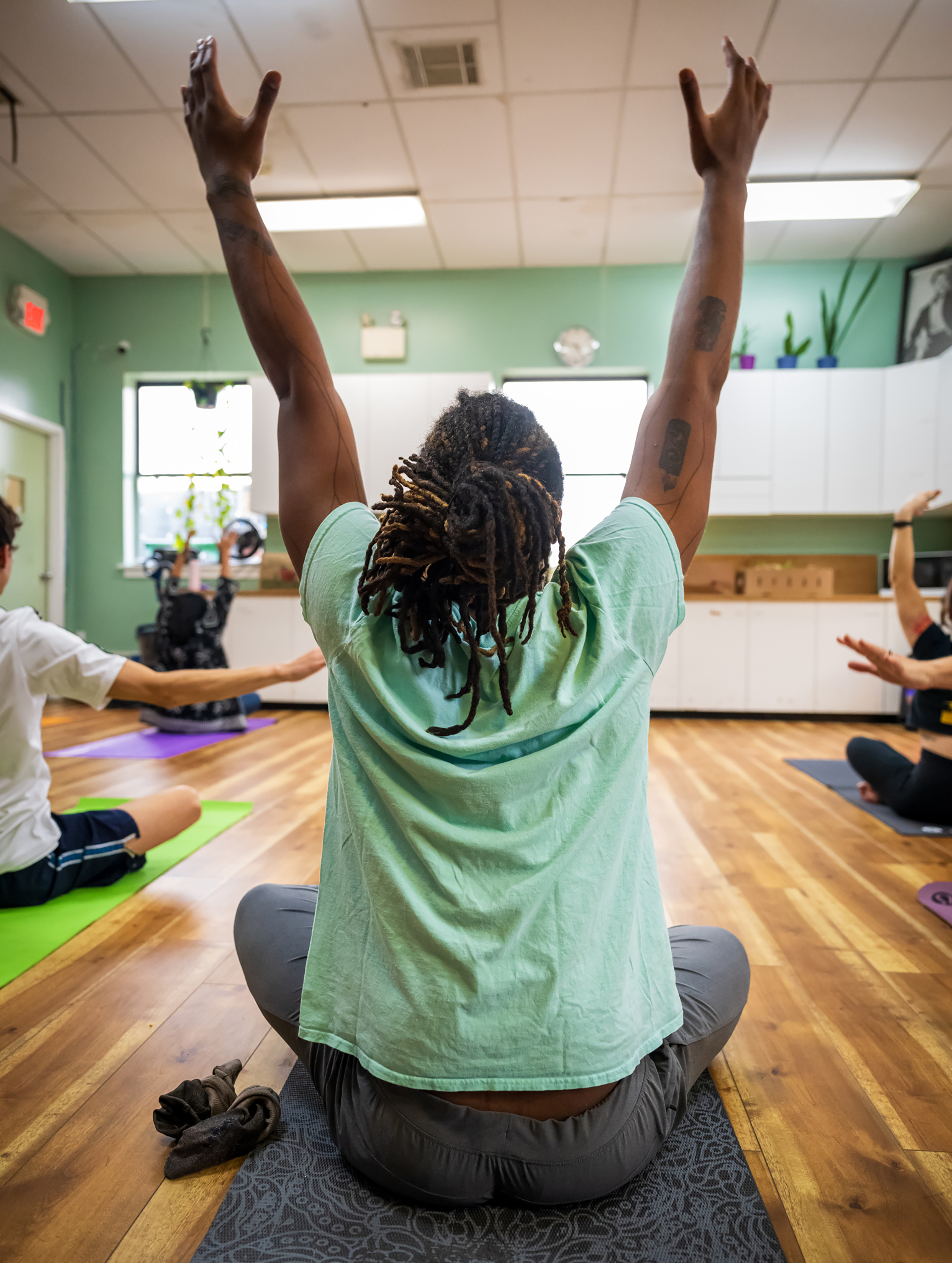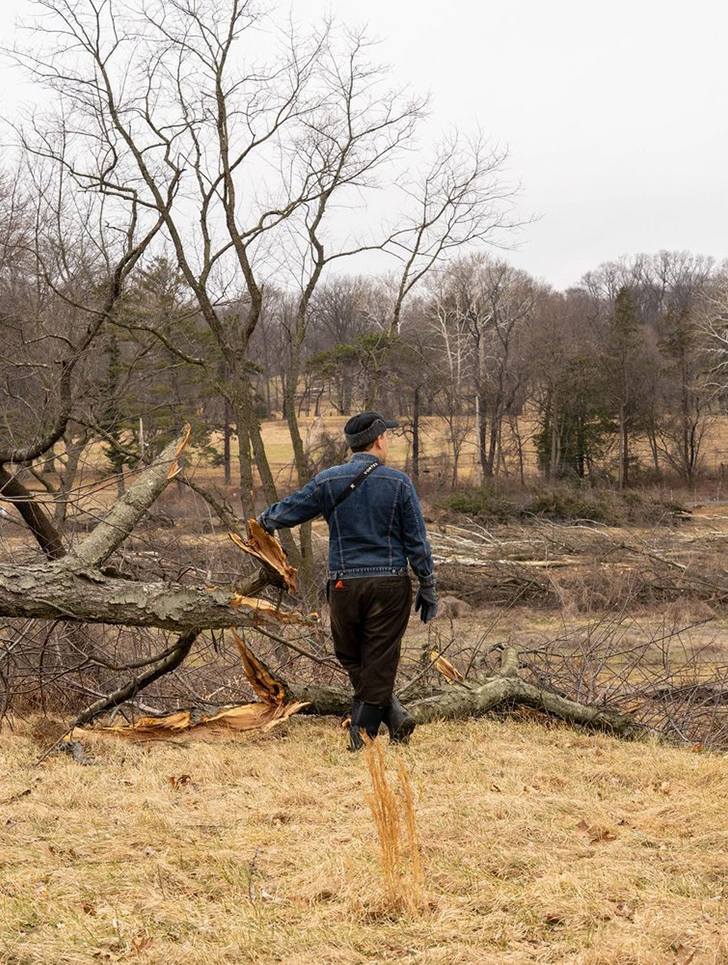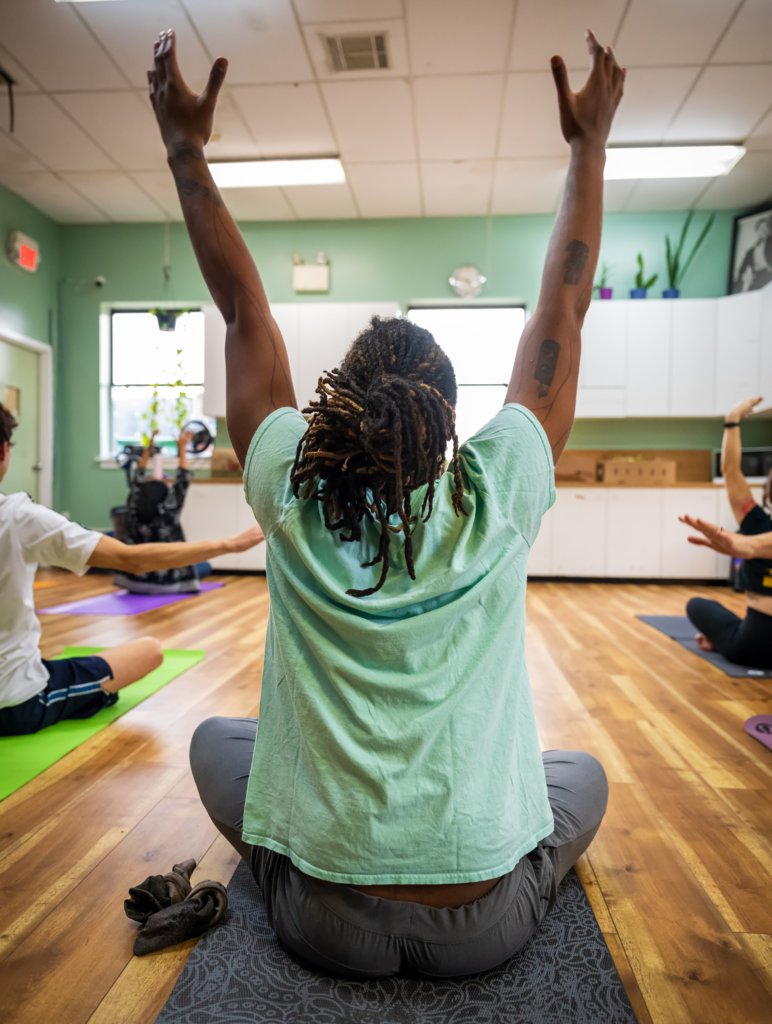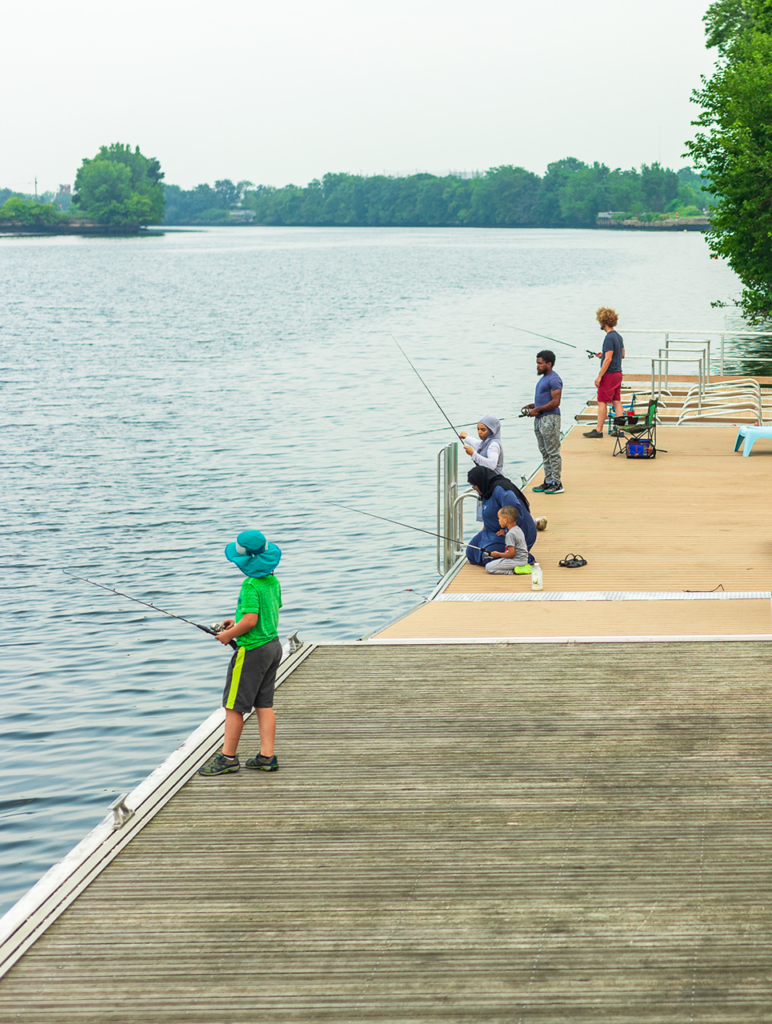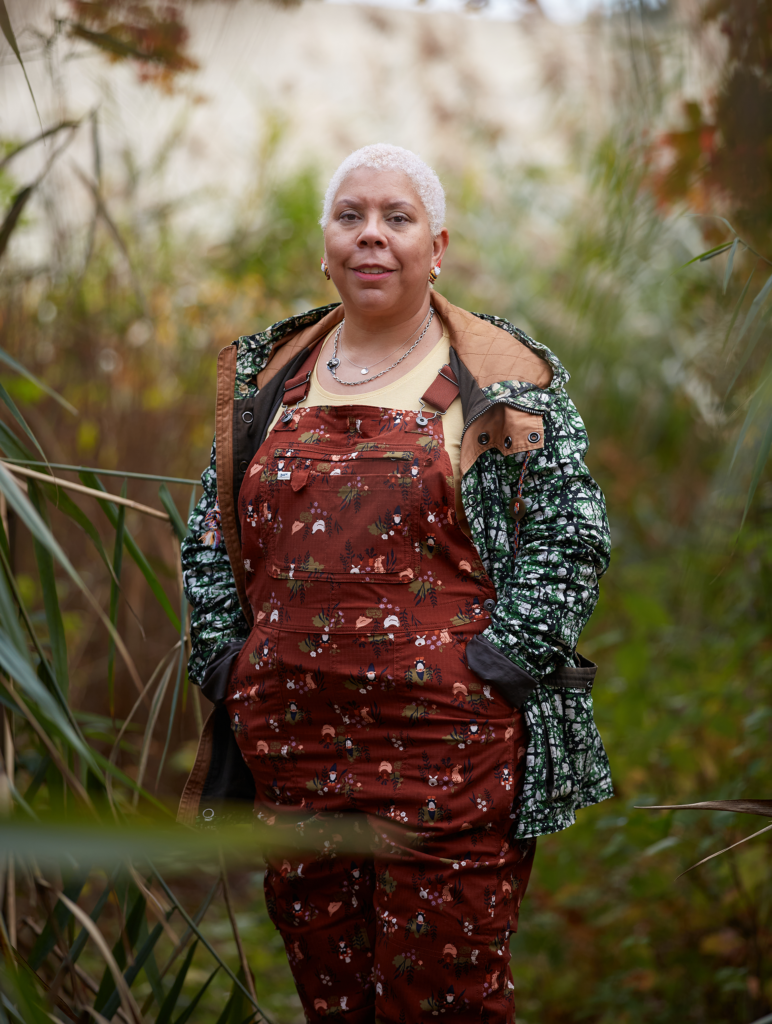Six-year-old West Philly native Idris McClellan looks very much at home running through Awbury Arboretum on a recent fall day, but he’s actually there on doctor’s orders.
McClellan is part of Prescribe Outside, a collaborative program of Children’s Hospital of Philadelphia (CHOP), Awbury, Let’s Go Outdoors and the U.S. Forest Service to encourage outdoor time and recreation for children and their families.
When asked what he enjoys most about being outside or being a part of their program, McClellan explains it simply: “I like birds [and] I like hikes.”
McClellan’s mother, Laray ‘Lovely Ray’ Smalley shares that the prescription isn’t something that came as a burden, but as a relief. She sees it as an appealing opportunity for her and her son — who spend most of their days indoors at school and work — to participate in physical, nature-based activities.
That day at Awbury, Prescribe Outside program manager Grace Parker leads a gaggle of children and their families through the arboretum’s “farmside,” home to chickens, goats, a community farm hub and more, before taking part in an obstacle course.
“When I told [my son] that we were going to be coming here, he was even more excited,” says Smalley. “He actually got up [earlier] than he normally will just to make sure that we get here on time. So that was pretty awesome for me to know that he actually enjoys doing it.”
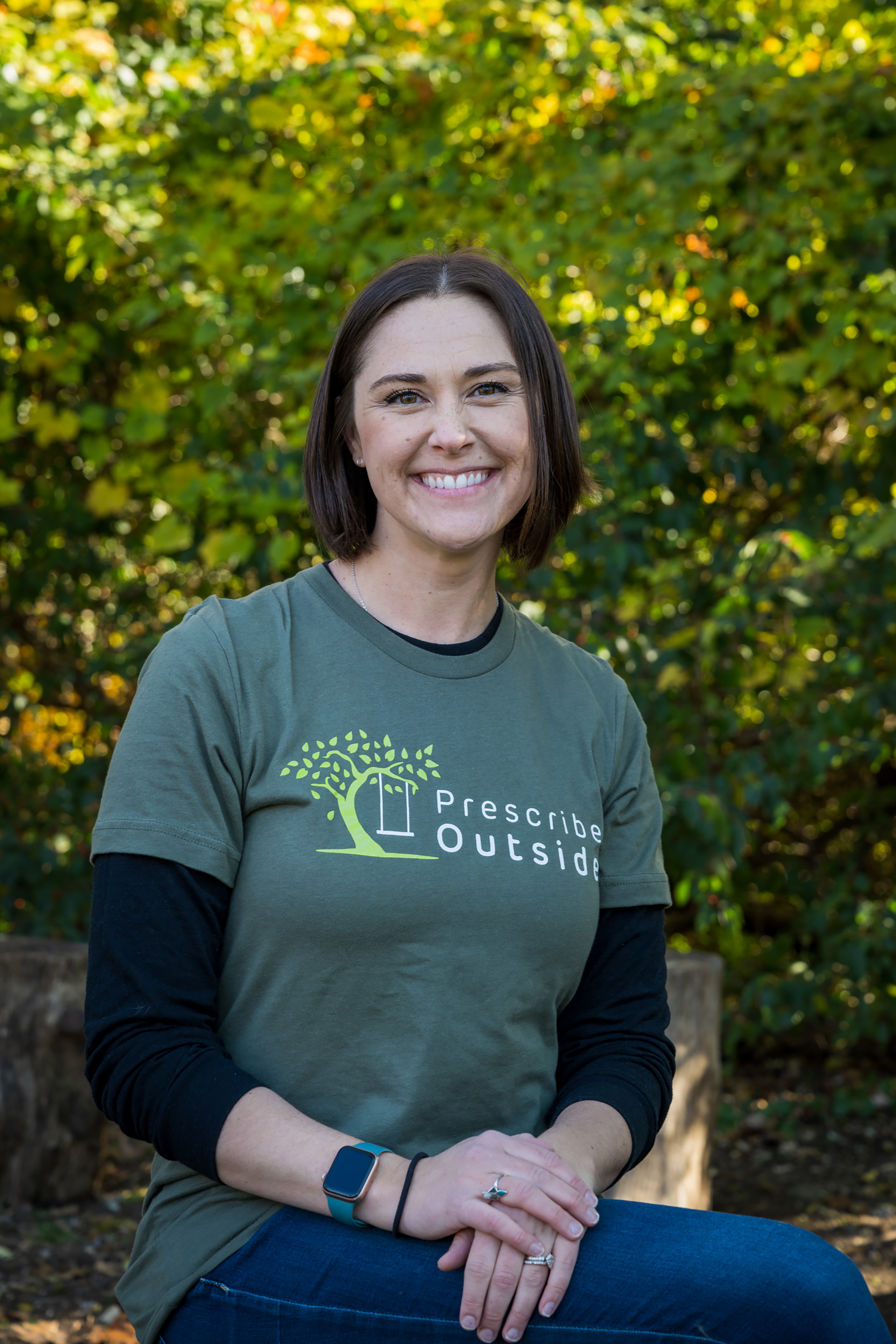
Through Prescribe Outside, CHOP — one of the leading medical institutions globally — is able to provide a free and healthy holistic treatment that comes in the simple form of being outside. It’s part of a trend among doctors exploring more holistic prescriptions for their patients, a practice that became even more needed during COVID-19.
“During the pandemic, we saw kids getting less healthy because they were trapped inside,” says Sharon Sutherland, pediatric doctor at CHOP’s Cobbs Creek facility. With quarantine came heightened use of screens and a major increase in inactivity leading to obesity in children and teens.
Getting everybody off of those screens, the whole family spending some time together, doing something that is good for them, it just makes a lot of sense.”
— Dr. Barbara Rolnick, Children’s Hospital of Philadelphia
“There’s been a lot of research that has found excessive screen use makes kids depressed,” says Barbara Rolnick, pediatric doctor at CHOP’s Roxborough clinic. “Getting everybody off of those screens, the whole family spending some time together, doing something that is good for them, it just makes a lot of sense.”
Afraid of the long-term results of prolonged screen time and sedentary behavior, doctors Rolnick, Sutherland and fellow CHOP pediatric doctor Natalie Minto collaborated to initiate the Prescribe Outside program in 2022.

While CHOP isn’t always able to recommend this to their inpatients who need closer medical attention, Prescribe Outside offers another solution for ambulatory patients who are at serious risk of mental health concerns.
“We’re able to prescribe medication to try to help relieve whatever illness, but sometimes just getting outside will be helpful for a lot of these issues,” says Sutherland. “Kids with ADHD, hyperactivity, anything like that, we know just going outside and running and smelling the green will be important.”
We want to live in a world where nature is seen as a valuable and celebrated part of health and well-being.”
— Sara Stevenson, Awbury Arboretum
As reported by the U.S. Forest Service and a 2022 Harvard University research study, time outdoors yields major benefits for one’s physical and mental health. Researchers say time in green spaces encourages exercise, social interaction, reduction in stress and anxiety, and improved sleep.
As a case worker for the Department of Human Services, Smalley works from home. For her, the prescription wasn’t just about getting her son outside, but offered some outdoor respite for herself as well.
“When I do get a chance to come outside, I feel happy, especially when the sun is shining. It just brings a good spirit into me, a good energy,” says Smalley.
While nature-based healing might seem simple, there are still barriers — such as lack of access to green spaces throughout the city — that bars folks from making the trek out.
West Philadelphia has Bartram’s Garden and The Woodlands; Rittenhouse Square fits snuggly in Center City; Fairmount Park is expansive and has great views of downtown; and FDR Park is the famed treasure of South Philly. But despite the numerous green spaces, there are still people who’ve never explored these parks — or even know they exist.
“I feel that there are a lot of resources in the city of Philadelphia, but they’re kind of insular. And you’re not always aware of them,” says Minto.
Through Prescribe Outside, CHOP and their green space partners are providing opportunities for people to find ways to interact with the outdoors that don’t feel too daunting.
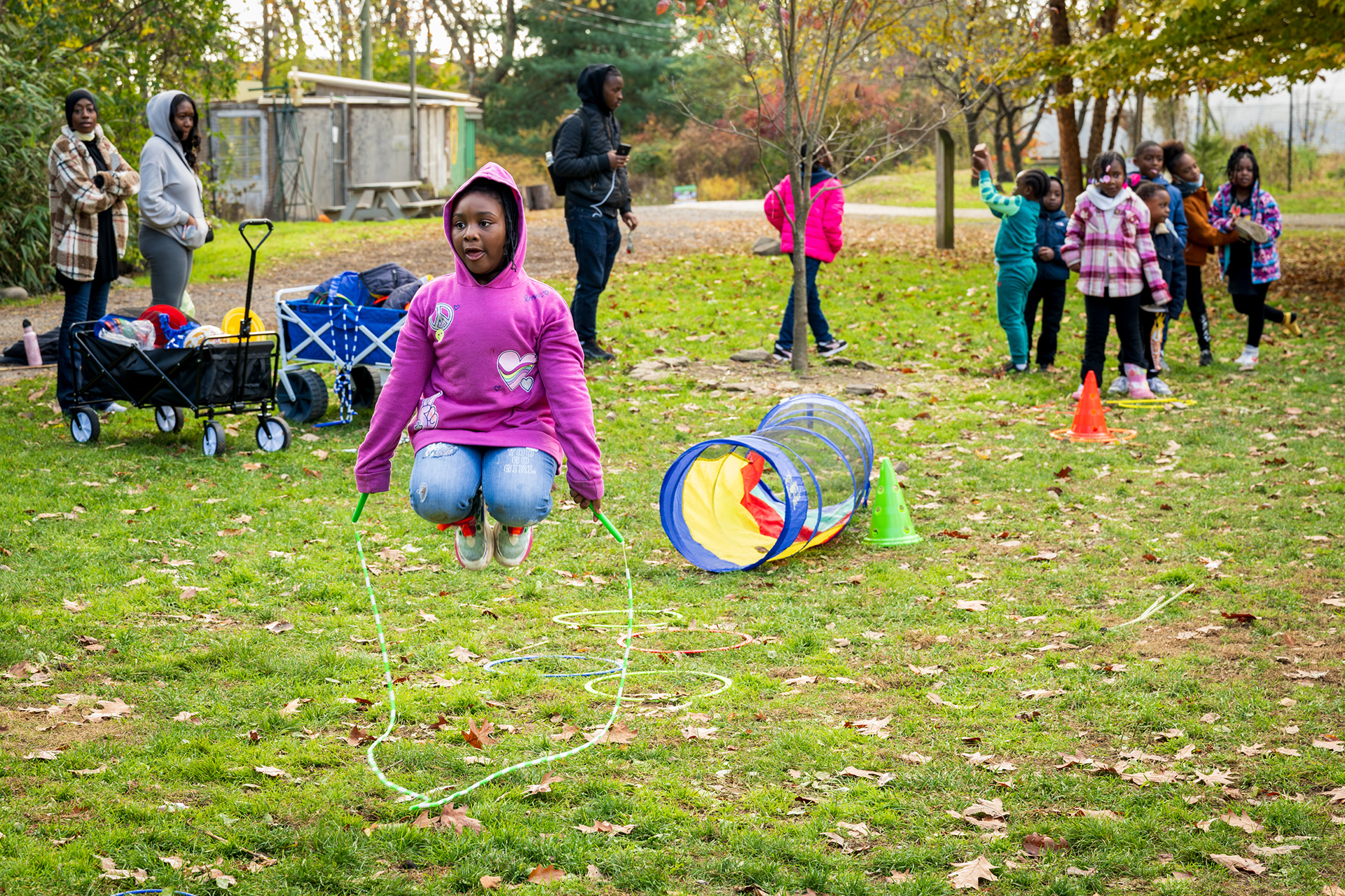
“I have one family that lived very near Pennypack Park and had never stepped foot in there. And after they went to one of these activities, it’s become one of their favorite places and they go all the time,” says Rolnick. “Sometimes people are afraid to try something new, but then once they try it and see how great it is, they become repeat visitors.”
Prescribe Outside recently partnered with Awbury to bring programming to families in Northwest Philly. Their mission is to make the program accessible throughout the city, meeting all patients and families where they are. The 56-acre, open-to-the-public arboretum, which includes sprawling woodlands, wetlands, meadows, gardens and agriculture fields like the Weavers Way Mort Brooks Memorial Farm, is the latest to facilitate programming on behalf of CHOP.
As the land steward representative for Prescribe Outside, Awbury’s role is to help facilitate community connection to green spaces and help understand the needs of their community.
“It’s just so in line with our mission,” says Awbury executive director Sara Stevenson. “We’re trying to create inclusive green spaces, we’re trying to foster an environment that’s really welcoming, and find creative ways to connect — especially youth and families — with nature.”
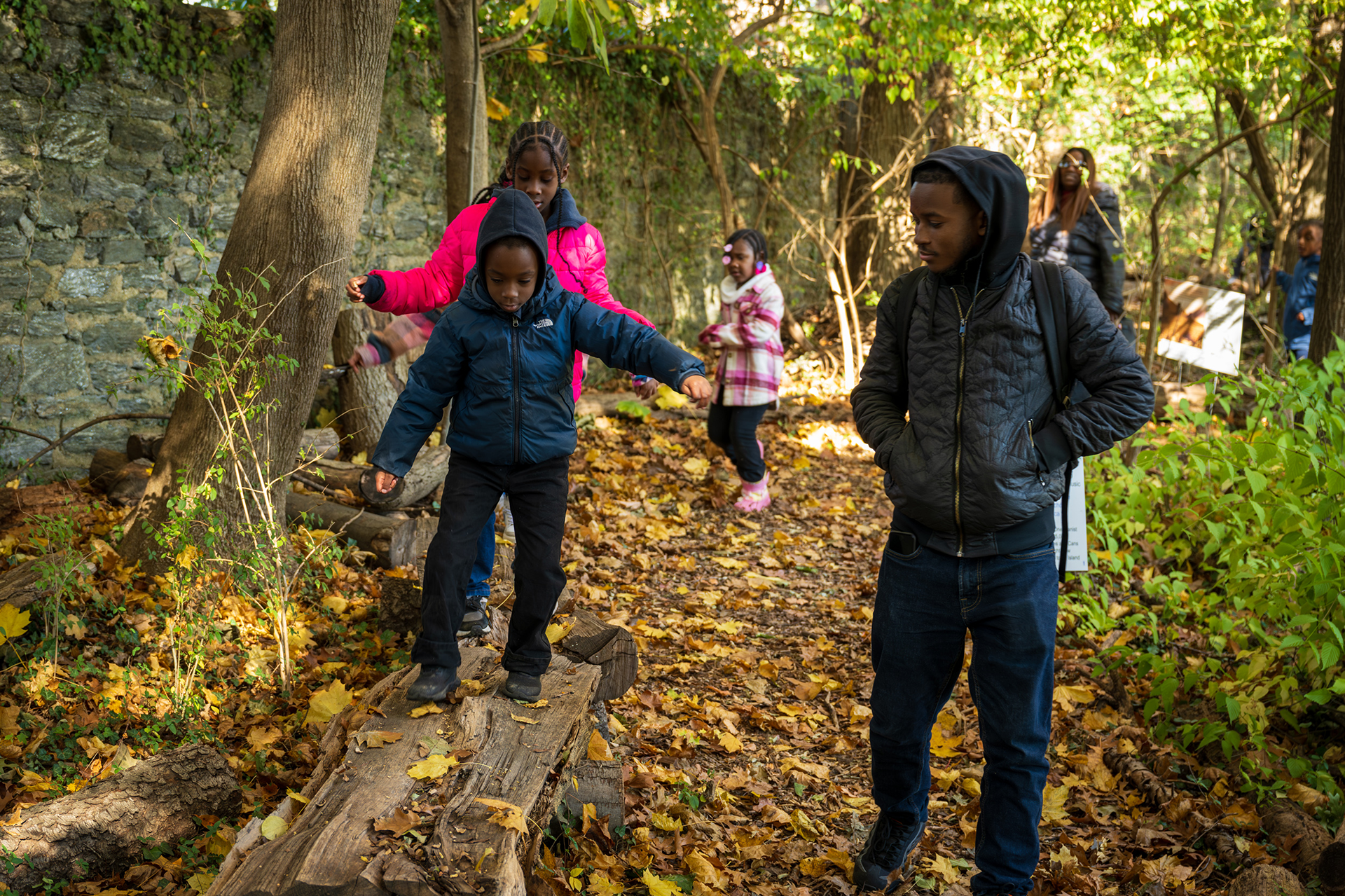
At Awbury, attendees can expect an array of activities to participate in, like nature hikes and storytime strolls where kids are read stories before venturing on a walk through the meadows.
Beyond Awbury, there are scavenger hunts, tree identification and card making in Cobbs Creek Park, archery at FDR Park and many more activities throughout the year. And the events aren’t random. Together, CHOP physicians and green space teams collaborate on activities that are both environmentally enriching and conscious of medical needs.
“We’re taking a look at what they’re seeing clinically and trying to translate into a program that could be helpful,” says Prescribe Outside’s Parker.
“For instance, our bubble walks. You’re walking out in nature, you’re able to explore and be amongst the trees. But also, there is this emphasis on blowing bubbles, which to kids is just fun, but [what] you’re trying to teach them is to moderate their breathing as a way to regulate their nervous system,” Parker shares. “I like to think of it as almost physical therapy, and that they’re playing, but don’t really realize it.”
Awbury and Prescribe Outside gear programming towards groups and families; in group activities, staff members like Stevenson and Parker notice there’s less hesitancy to get involved. Even if families are unfamiliar with the terrain, they’re trying new games and interactive activities because they feel safe and respected in their environments. As Stevenson shares, there’s a lack of intimidation about trying something new in a group.
“We’re intentionally not self-guided,” says Stevenson. “We are trying to do these structured meetups, one, to build community [and] two, because, though our target audience are children, we feel like parents are a really important audience for this. We want parents to feel comfortable in nature too, so that they’re taking their kids into nature beyond this program.”
Not only does the program create a sense of care and belonging for families who might not be intimately connected to green spaces, it also subtly addresses the alternatives to antidepressants — which can negatively affect young developing brains. In some cases, children and teens on antidepressants are still experiencing suicidal thoughts.
Rather than wait until antidepressants are necessary, Prescribe Outside utilizes preventative healthcare, or the act of treating a disease or illness before it manifests. By getting outside, soaking in vitamin D, and breathing in fresh air, Rolnick feels CHOP’s doctors are able to tackle challenges with mental health before major episodes.
“The system that we have now is designed to be reactive, not proactive; we wait for kids to be in crisis. Then there’s a three to four month wait for them to get help for whatever is troubling them in terms of mental health,” says Rolnick. “We didn’t want to sit and watch all these kids getting worse and having nowhere to go.”
Prescriptive outdoor time isn’t a new concept, and Prescribe Outside isn’t an entirely novel initiative. It’s derived from the CHOP’s NaturePHL program, a multi-division project that connected kids with nature for better health and well-being. Bringing together CHOP’s primary care physicians, environmental educators, public health advocates, Parks and Recreation leaders with community leaders, NaturePHL worked to integrate green spaces and healthcare facilities as a resource in pediatric and family care.
NaturePHL was a widely recognized clinical outdoor project among 80 other similar programs that exist around the country, but despite its success, the program was scrapped amidst the pandemic.
Not willing to let go of the progress being made, childcare physicians Sutherland, Minto and Rolnick committed themselves to rebranding the nature-based care program.
As Prescribe Outside continues to expand into more green spaces throughout Philadelphia, Rolnick shares that the Chestnut Hill clinic could be the next to participate.
“We want to live in a world where nature is seen as a valuable and celebrated part of health and well-being,” says Stevenson. “And that there’s no right way to engage with nature, that any way is positive.”


